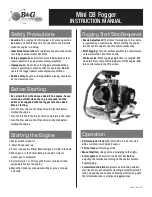
12084-101 Rev. D
Page 7
8 9 10 11 12 13 14 15 16 17 18 19 20
PROJECTION RANGE (FIGURE 1)
30
25
20
15
10
5
0
Minimum
Maximum
Projection Distance (FT.)
R
e
fra
ct
io
n
D
ist
a
n
ce
(F
T
.)
PROJECTION RANGE LIST (FIGURE 2)
MINIMUM
MAXIMUM
PROJECTION
REFRACTING
REFRACTING
DISTANCE
DISTANCE
DISTANCE
FT
M
FT
M
FT
M
8
2.5
6.6
2.0
9.9
3.0
9
2.8
7.7
2.4
11.5
3.5
10
3.1
8.7
2.7
13.0
4.0
11
3.4
9.8
3.0
14.5
4.5
12
3.7
10.9
3.4
16.1
5.0
13
4.0
11.9
3.7
17.6
5.4
14
4.3
13.0
4.0
19.1
5.9
15
4.6
14.1
4.3
20.7
6.4
16
4.9
15.1
4.6
22.2
6.8
17
5.2
16.2
4.9
23.7
7.3
18
5.5
17.3
5.3
25.3
7.8
19
5.8
18.3
5.6
26.8
8.2
20
6.2
19.4
6.0
28.3
8.7
INSTALLATION AND ALIGNMENT
The projector should be installed according to the
following procedures:
1. If using a wall mount, it is best to locate a wall
stud to support the projector head’s weight.
2. The following distances are important in the
setup of a refracting room:
REFRACTING DISTANCE (RD) This is equal
to the distance from the patient’s eye to the
screen.
PROJECTION DISTANCE (PD) This is equal to
the distance from the slide to screen.
LETTER HEIGHT (LH) The height of a 20/200
character should be equal to the refraction
distance times the tangent of 50 minutes of arc
or .014545.
LH (inches or mm) = RD (inches or mm) x
.014545
For example, a refracting distance of 240 inch-
es (20 feet) will require a letter height of 3.49
inches (240 inches x .014545 = 3.49 inches)
3. Determine the refracting distance by measur-
ing the distance from the patient to the screen.
Please refer to Figures 1 and 2 which show
combinations of refraction and projection dis
-
tances achievable with this system.
4. Install the projector screen.
NOTE: To ensure maximum performance from your
projector, we recommend that you always
use Reichert projection screens.
5. Insert the variable focus objective tube into the
support barrel. Do not fully tighten the outer
objective lock screw (11) to allow for inal fo
-
cus adjustments. Check the in and out move
-
ment of the outer and inner objective tubes (8)
and (9). It may be necessary to loosen lock
screws (11) and (12) to provide freedom of
movement.
6. Attach the LongLife P-O-C head to the mount
by unscrewing the mounting knobs (5) insert-
ing the head into the yoke (17) and reitting the
knobs into the proper position. Fully tighten
the knobs after inal adjustment of the system.
7. Insert a character slide into the instrument and
project a 20/200 “E” (or other character) onto
the screen.
8. Check the three dimensional alignment of the
system. This projection system is optimized
when the projector screen is angled to direct
light to the patient’s head. Turn the projector
“ON”. Place a mirror on the screen. The light
should project where the patient’s head would
be. See Figure 3.
9. Adjust the image positioning on the screen. It
may be necessary to adjust the projector and
the screen. Secure projector by tightening
yoke screws (18) and mounting knobs.
1
0. Determine the proper letter size based on the
refracting distance used. Refer to Figure 4 and
the
Letter Sizing Chart on pages 11 & 12.
11. Attach Letter Sizing Chart to the screen.
12. Move the inner and outer objective tubes,
usually in opposite directions, until the 20/200
“E” is in sharp focus and ills the bracket on
the Letter Sizing Chart as shown in Figure 4.
13. Tighten the inner and outer objective lock
screws.
Summary of Contents for LongLife Project-O-Chart 12084
Page 1: ...LongLife P O C User s Guide ...
Page 16: ......


































